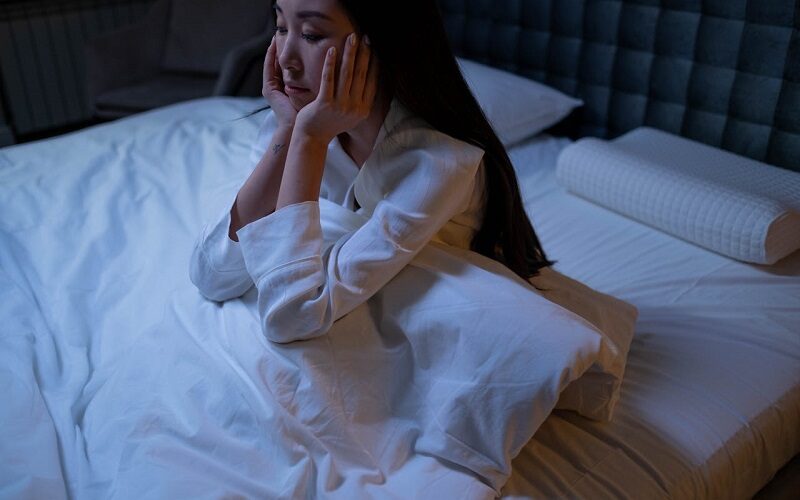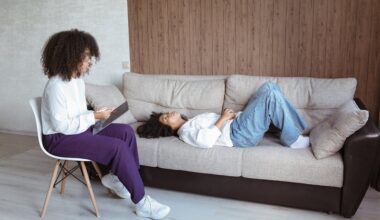Research by the Centers for Disease Control (CDC) estimates that more than 14% of adults had difficulty falling asleep almost every day or every day in the last month — and nearly 18% had a hard time staying asleep.
Insufficient sleep can lead to any number of mental and physical health issues. Studies show inadequate sleep can cause things like an increased risk of obesity, a decline in cognitive function, and a higher risk of cardiovascular morbidity. In short, sleep is essential for our health and well-being.
Fortunately, if you have trouble falling or staying asleep, there’s a simple, effective technique that’s easy to learn and use and doesn’t require a prescription. Whether sleep anxiety is keeping you awake or you are struggling with other sleep problems, breathing exercises for sleep have been proven in numerous studies to enhance sleep quality and the amount of sleep one gets.
Keep reading to learn more about the science behind using breathing techniques for sleep and how to get a good night’s rest so you wake up refreshed every morning.
The Science of Breathing and Sleep
Using deep breathing methods to sleep isn’t just some theory or viral self-help trend. It can effectively calm your mind and body, and there’s actual science behind the technique. Research shows a clear link between respiration and emotions. In studies, deep breathing in a relaxed, controlled pattern had a calming effect. It reduced anxiety and relaxed the nervous system. For some people, it has a physiological impact on heart rate and blood pressure.
“Controlled breathing techniques can help calm the body and mind, easing the transition into sleep. When you focus on your breath, it directs attention away from racing thoughts or stressors. Deep breathing activates the body’s parasympathetic nervous system, which counteracts the stress response, slowing heart rate, lowering blood pressure, and inducing a feeling of calm. Over time, practicing controlled breathing regularly can improve sleep quality and overall well-being.”
– Talkspace therapist Bisma Anwar, LPC, LMHC
8 Best Breathing Exercises for Sleep
There are many types of deep breathing exercises. Each is easy to learn and simple to do, and it can be a game-changer in the amount and quality of rest you get every night. Which one works best to help you fall or stay asleep can vary.
Deep breathing to fall asleep works by triggering a relaxation response that puts the body and mind in a state of calm. Research suggests that using patterned breathing techniques to fall asleep can even be an effective alternative to medication for some people.
1. Box breathing
Box breathing is widely used to help people remain focused, manage different types of stress, and keep a positive state of mind. This is one of the easiest breathing techniques to master, making it a popular choice for beginners. All it involves is taking very slow, deep breaths.
In research, box breathing has been shown to reduce stress and improve mood.
How to do it:
- Sit in a chair or on the floor against a wall so your back is supported.
- Close your eyes and breathe deeply through your nose as you count to 4.
- Hold your breath and slowly count to 4.
- Slowly exhale, counting to 4 again.
- Wait 4 seconds, and then repeat steps 1 – 3.
- For best results, repeat the entire cycle at least 3 times or for up to 4 minutes.
2. Belly or diaphragmatic breathing
Belly breathing, also called diaphragmatic or abdominal breathing, is one of the more well-known breathing techniques to fall asleep. It can reduce blood pressure and slow down your heart rate, making it an excellent technique for anyone whose anxiety keeps them up at night. It’s done by contracting the diaphragm and expanding the belly through a deep inhale-exhale breath pattern, which reduces respiration frequency.
Studies show that the belly breathing exercise can reduce depression, anxiety, and stress — all of which are linked to sleep disruption.
How to do it:
- Sit or lay down so you’re comfortable.
- Put one hand on your chest and the other on your belly.
- Deeply inhale through the nose as you feel your belly rise.
- Slowly exhale through the mouth while you feel your belly fall.
- Repeat until you feel calm.
3. 4-7-8 breathing
The 4-7-8 technique is easy to learn and practice. It promotes fast sleep by regulating the breath to calm the mind and induce relaxation, allowing for a peaceful night’s rest.
Deep, slow breathing enhances parasympathetic activity, which signals the brain to tell the body to calm down. It also helps control how the body responds to anxiety.
How to do it:
- Find a comfortable position — you can either sit or lie down.
- Take a slow, deep, controlled breath through your nose, counting to 4.
- Hold your breath for 7 seconds.
- Slowly exhale through your mouth as you count to 8.
- Repeat for a few cycles while focusing on the rhythm of your breath.
4. Kapalbhati pranayama breathing
Kapalbhati pranayama is an advanced breathing technique originating from the ancient practice of yoga in India. The name “kapalbhati” is derived from Sanskrit, where “kapal” means “skull” and “bhati” means “shining” or “illuminating,” reflecting the practice’s invigorating and cleansing effects. It can be a great way to improve breathing, especially when the nasal passages are blocked. It also has other benefits, like enhancing concentration and mood, reducing belly fat, and strengthening the lungs.
It’s important to note that kapalbhati pranayama deep breathing exercise isn’t suitable for everyone. Using this breathing technique for sleep should only be done with the guidance of a trained professional if you:
- Have a hernia
- Have epilepsy
- Are pregnant
- Have high or low blood pressure
- Have recently had abdominal surgery
Although kapalbhati pranayama breathing is often done in the mornings to gain energy, studies have found that this fast breathing also offers a parasympathetic effect that can promote relaxation, suggesting it can be beneficial for those with sleep disorders.
How to do it:
- Sit comfortably with your spine straight, and your shoulders relaxed.
- Put your hands on your knees with your palms facing upward.
- Deeply inhale through your nose as you expand your abdomen.
- Forcefully exhale through your nose quickly as your abdominal muscles contract.
- After each forceful exhale, let your lungs naturally refill with air while your stomach relaxes.
- Repeat the cycle several times.
- Once done, return to normal breath patterns and pause to observe any sensations you feel throughout your body.
- Finish by taking a few deep breaths and expressing gratitude for the process.
5. The Papworth method
The Papworth method focuses on relaxation through controlled breathing. It can calm the nervous system, resulting in tranquility conducive to better sleep, restful nights, and improved well-being.
The Papworth breathing method is widely hailed as a safe and easy intervention for asthma control. It’s also found to improve quality of life and reduce anxiety, which makes it an excellent breathing method to sleep.
How to do it:
- Sit upright.
- As you inhale through your nose, count to 4.
- Exhale through your nose.
- While breathing, focus on the rising and falling of your belly.
- Repeat the cycle for several minutes.
6. Alternate nostril breathing
Alternate nostril breathing — also known as Nadi Shodhana — is an ancient yogic technique for relaxing the body and mind in preparation for sleep.
Alternate nostril breathing has many benefits, including lowered heart rate, reduced stress, and enhanced well-being, but it may not be suitable for everyone. Some studies suggest the technique can be integrated as an effective lifestyle modification to improve sleep.
How to do it:
- Get into a comfortable seated position with crossed legs.
- Put your left hand on your left knee and bring your right hand up in front of your face.
- Exhale fully.
- Gently close your right nostril with your right thumb and inhale deeply and slowly through the left nostril.
- Close the left nostril and open the right one to exhale.
- Once you fully exhale, inhale slowly and deeply through the right nostril.
- Close the right nostril, open the left, and exhale.
- Repeat the cycle for several rounds, up to 5 minutes.
- Finish with an exhale through the left nostril.
- Once finished, release both nostrils and return to a normal breath pattern.
7. The roll breathing method
To use the roll breathing technique, you inhale through the nose and exhale through the mouth with a whooshing noise. The method helps you connect with the rhythm of your breath and fully use your lungs.
The roll breathing exercise can reduce stress and, with practice, offers instant relaxation. multiple bodies of research note the benefits of mindfulness, including reduced stress and anxiety, and some even show that controlled breathing, like roll breathing, can induce peacefulness, which will help with falling asleep.
How to do it:
- Lie on your back with your knees bent.
- Rest your left hand on your belly and your right hand on your chest.
- Fill your lower lungs, taking a deep breath. Your left hand should rise while you inhale (but your right hand should stay still).
- Inhale through the nose and exhale through the mouth while keeping your shoulders relaxed.
- Fill and empty your lower lungs 8 times, then add the next step.
- Inhale your lower lungs again, but then continue inhaling to fill your upper chest. You should feel your right hand begin to rise and your left hand slightly fall.
- Slowly exhale through your mouth, making a quiet whooshing sound.
- Practice for 3 to 5 minutes as your belly and chest roll rhythmically, like waves.
For the best results, use roll breathing to fall asleep in a quiet, comfortable environment. Note that some people feel dizzy when they first start practicing roll breathing. Be sure to get up slowly in the beginning until you know how the practice will affect you.
8. Progressive relaxation breathing
The progressive relaxation breathing method involves tensing and relaxing specific muscle groups throughout the body while focusing on deep rhythmic breathing. Controlled breathing combined with muscle relaxation can relieve tension and create a sense of calm throughout the body and mind, reducing stress and anxiety.
According to studies, progressive muscle relaxation can effectively reduce stress and improve symptoms of depression and anxiety — all of which are associated with disrupted sleep patterns.
How to do it:
- Sit or lie down in a quiet space.
- Inhale deeply through your nose, expand your belly, and exhale slowly through your mouth to release tension.
- Identify muscle groups — like the fists, feet, or shoulders — and tense up for a few seconds, releasing to relax.
- Progressively move to different muscle groups throughout your body, tensing each group for several seconds before fully relaxing.
- Throughout the process, take continuous, slow, deep breaths while focusing on how you feel.
- Continue the cycle — slowly tensing and then releasing muscle groups — until reaching a feeling of deep relaxation.
When to Seek Professional Help
Sleep and mental health are closely intertwined. Healthy sleep is essential for maintaining ultimate physical and mental health and well-being. While there are dozens of self-help, non-invasive ways to manage sleep issues — like doing deep breathing exercises for sleep — sometimes you might need professional help. Reach out to your doctor if you’ve tried natural techniques but still can’t fall or stay asleep through the night or if you sleep but are persistently tired throughout the day.
You can also reach out to a mental health professional to explore other coping techniques that can help you get a good night’s rest and feel energized and productive during your days. Talkspace offers online therapy for sleep and medication management that’s convenient, affordable, and accessible.
Start treatment for insomnia through online cognitive behavioral therapy (CBT) and, if necessary, get sleep medication online from an experienced mental health professional who’s ready to help.
Sources:
- Adjaye-Gbewonyo D, Ng A, Black L. Sleep Difficulties in Adults: United States, 2020. Centers for Disease Control and Prevention. June 22, 2022. Accessed April 19, 2024. https://www.cdc.gov/nchs/products/databriefs/db436.htm.
- Chattu V, Manzar Md, Kumary S, Burman D, Spence D, Pandi-Perumal S. The global problem of insufficient sleep and its serious public health implications. Healthcare. 2018;7(1):1. doi:10.3390/healthcare7010001. https://www.ncbi.nlm.nih.gov/pmc/articles/PMC6473877/. Accessed April 19, 2024.
- Jerath R, Beveridge C, Barnes VA. Self-regulation of breathing as an adjunctive treatment of insomnia. Frontiers in Psychiatry. 2019;9. doi:10.3389/fpsyt.2018.00780. https://www.ncbi.nlm.nih.gov/pmc/articles/PMC6361823/. Accessed April 19, 2024.
- Philippot P, Chapelle G, Blairy S. Respiratory feedback in the generation of emotion. Cognition & Emotion. 2002;16(5):605-627. doi:10.1080/02699930143000392. https://www.tandfonline.com/doi/abs/10.1080/02699930143000392?journalCode=pcem20. Accessed April 19, 2024.
- Yau KK-Y, Loke AY. Effects of diaphragmatic deep breathing exercises on prehypertensive or hypertensive adults: A literature review. Complementary Therapies in Clinical Practice. 2021;43:101315. doi:10.1016/j.ctcp.2021.101315. https://www.sciencedirect.com/science/article/abs/pii/S1744388121000141. Accessed April 19, 2024.
- Ma X, Yue Z-Q, Gong Z-Q, et al. The effect of diaphragmatic breathing on attention, negative affect and stress in healthy adults. Frontiers in Psychology. 2017;8. doi:10.3389/fpsyg.2017.00874. https://www.sciencedirect.com/science/article/abs/pii/S1744388121000141. Accessed April 19, 2024.
- Levinson DB, Stoll EL, Kindy SD, Merry HL, Davidson RJ. A mind you can count on: Validating breath counting as a behavioral measure of mindfulness. Frontiers in Psychology. 2014;5. doi:10.3389/fpsyg.2014.01202. https://www.frontiersin.org/journals/psychology/articles/10.3389/fpsyg.2014.01202/full. Accessed April 19, 2024.
- Balban MY, Neri E, Kogon MM, et al. Brief structured respiration practices enhance mood and reduce physiological arousal. Cell Reports Medicine. 2023;4(1):100895. doi:10.1016/j.xcrm.2022.100895. https://pubmed.ncbi.nlm.nih.gov/36630953/. Accessed April 19, 2024.
- Vierra J, Boonla O, Prasertsri P. Effects of sleep deprivation and 4‐7‐8 breathing control on heart rate variability, blood pressure, blood glucose, and endothelial function in Healthy Young Adults. Physiological Reports. 2022;10(13). doi:10.14814/phy2.15389. https://www.ncbi.nlm.nih.gov/pmc/articles/PMC9277512/. Accessed April 19, 2024.
- Malhotra V, Javed D, Wakode S, Bharshankar R, Soni N, Porter P. Study of immediate neurological and autonomic changes during kapalbhati pranayama in yoga practitioners. Journal of Family Medicine and Primary Care. 2022;11(2):720. doi:10.4103/jfmpc.jfmpc_1662_21. https://www.ncbi.nlm.nih.gov/pmc/articles/PMC8963645/. Accessed April 19, 2024.
- Patil NS, Poovishnu Devi T. Efficacy of papworth method to improve quality of life and exercise tolerance in asthma. Lecture Notes in Electrical Engineering. Published online 2024:341-347. doi:10.1007/978-981-99-7633-1_25. https://www.researchgate.net/publication/377214560_Efficacy_of_Papworth_Method_to_Improve_Quality_of_Life_and_Exercise_Tolerance_in_Asthma. Accessed April 19, 2024.
- Holloway EA, West RJ. Integrated breathing and relaxation training (the Papworth method) for adults with asthma in primary care: A randomised controlled trial. Thorax. 2007;62(12):1039-1042. doi:10.1136/thx.2006.076430. https://www.ncbi.nlm.nih.gov/pmc/articles/PMC2094294. Accessed April 19, 2024.
- Jahan I, Begum M, Akhter S, Islam Z, Haque M, Jahan N. Effects of alternate nostril breathing exercise on cardiac functions in healthy young adults leading a stressful lifestyle. Journal of Population Therapeutics & Clinical Pharmacology. 2020;27(2). doi:10.15586/jptcp.v27i2.675. https://jptcp.com/index.php/jptcp/article/view/675. Accessed April 19, 2024.
- Gajbhiye HA, Vij V, Raje D. Effect of Short-Term Practice of Left Nostril Breathing on Various Sleep Parameters in the Medical Students. Int J Prev Med. 2022;13:110. Published 2022 Aug 8. doi:10.4103/ijpvm.IJPVM_578_20. https://www.ncbi.nlm.nih.gov/pmc/articles/PMC9564237/. Accessed April 19, 2024.
- Khoury B, Lecomte T, Fortin G, et al. Mindfulness-based therapy: A comprehensive meta-analysis. Clinical Psychology Review. 2013;33(6):763-771. doi:10.1016/j.cpr.2013.05.005. https://www.sciencedirect.com/science/article/abs/pii/S0272735813000731?via=ihub. Accessed April 19, 2024.
- Leggett H. “cyclic sighing” can help breathe away anxiety. Scope – Beyond the Headlines. February 9, 2023. Accessed April 19, 2024. https://scopeblog.stanford.edu/2023/02/09/cyclic-sighing-can-help-breathe-away-anxiety.
- Toussaint L, Nguyen QA, Roettger C, et al. Effectiveness of progressive muscle relaxation, deep breathing, and guided imagery in promoting psychological and physiological states of relaxation. Evidence-Based Complementary and Alternative Medicine. 2021;2021:1-8. doi:10.1155/2021/5924040. https://www.ncbi.nlm.nih.gov/pmc/articles/PMC8272667/. Accessed April 19, 2024.
Talkspace articles are written by experienced mental health-wellness contributors; they are grounded in scientific research and evidence-based practices. Articles are extensively reviewed by our team of clinical experts (therapists and psychiatrists of various specialties) to ensure content is accurate and on par with current industry standards.
Our goal at Talkspace is to provide the most up-to-date, valuable, and objective information on mental health-related topics in order to help readers make informed decisions.
Articles contain trusted third-party sources that are either directly linked to in the text or listed at the bottom to take readers directly to the source.




